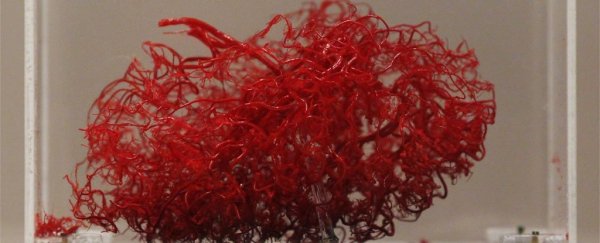For the first time ever, scientists have succeeded in non-invasively breaking through the blood-brain barrier that protects the brain, managing to deliver chemotherapy medication directly into the malignant brain tumour of a patient.
While the blood-brain barrier is designed to protect our brains – lining the brain's blood vessels to prevent toxic substances in the bloodstream from getting through – it's also served as somewhat of a brick wall for modern medicine. In this instance, however, scientists were able to non-invasively breach the blood-brain barrier, using tightly focused ultrasound to effectively part the brain's protective curtain. The advancement could lead to a host of new treatments for illnesses and disorders centred in the brain.
"The blood-brain barrier has been a persistent obstacle to delivering valuable therapies to treat disease such as tumours," said Todd Mainprize, a neurosurgeon in the Hurvitz Brain Sciences Program at Sunnybrook Health Sciences Centre in Canada and principal investigator of the study. "We are encouraged that we were able to temporarily open this barrier in a patient to deliver chemotherapy directly to the brain tumour."
In order to get medication directly to the site of the patient's malignant brain tumour, the scientists needed a way of getting past the blood-brain barrier. To do so, they infused her bloodstream with a chemotherapy drug and also with tiny, microscopic bubbles, which are smaller than red blood cells and can pass freely through blood.
Using MRI-guided low intensity sound waves, the team targeted blood vessels in the blood-brain barrier near the site of the tumour and used ultrasound waves to vibrate the microbubbles, which in turn loosened the tight cell junctions that hold the blood-brain barrier together. With the junctions loosened sufficiently, the chemotherapy drug flowed past the barrier and deposited within the targeted tumour site.
The literal breakthrough is the result of close to two decades' research by researchers at Sunnybrook Research Institute and industry partner Insightec, and could pave the way for addressing all manner of brain diseases, and not just cancer – but also Alzheimer's disease, Parkinson's disease, psychiatric conditions and more.
"Some of the most exciting and novel therapeutics for the treatment of malignant brain tumours are not able to reach the tumour cells because of the blood brain barrier," said Mainprize. "This technique will open up new opportunities to deliver potentially much more effective treatments to the targeted areas."
After the ultrasound treatment succeeded in breaching the blood-brain barrier, the tumour was surgically removed, and the scientists are using pathology to measure the differences between the concentration of chemotherapy in the regions targeted by sound waves and those in areas where the blood-brain barrier was not breached.
The answers they get from pathology will tell them how just how effective breaking the barrier is in terms of delivering medications – but in any case it's early days. Nine more participants with tumours have been scheduled to take part in the study and will receive the ultrasound treatment prior to invasive surgery to remove their tumours.
If the results are as successful as the first procedure appears to have been, we could be witnessing a revolution of sorts in how to get much-needed drugs directly to where they can benefit the brain.
"Breaching this barrier opens up a new frontier in treating brain disorders," said Neal Kassell, chairman of the Focused Ultrasound Foundation, which funded the research. "We are encouraged by the momentum building for the use of focused ultrasound to non-invasively deliver therapies for a number of brain disorders."
